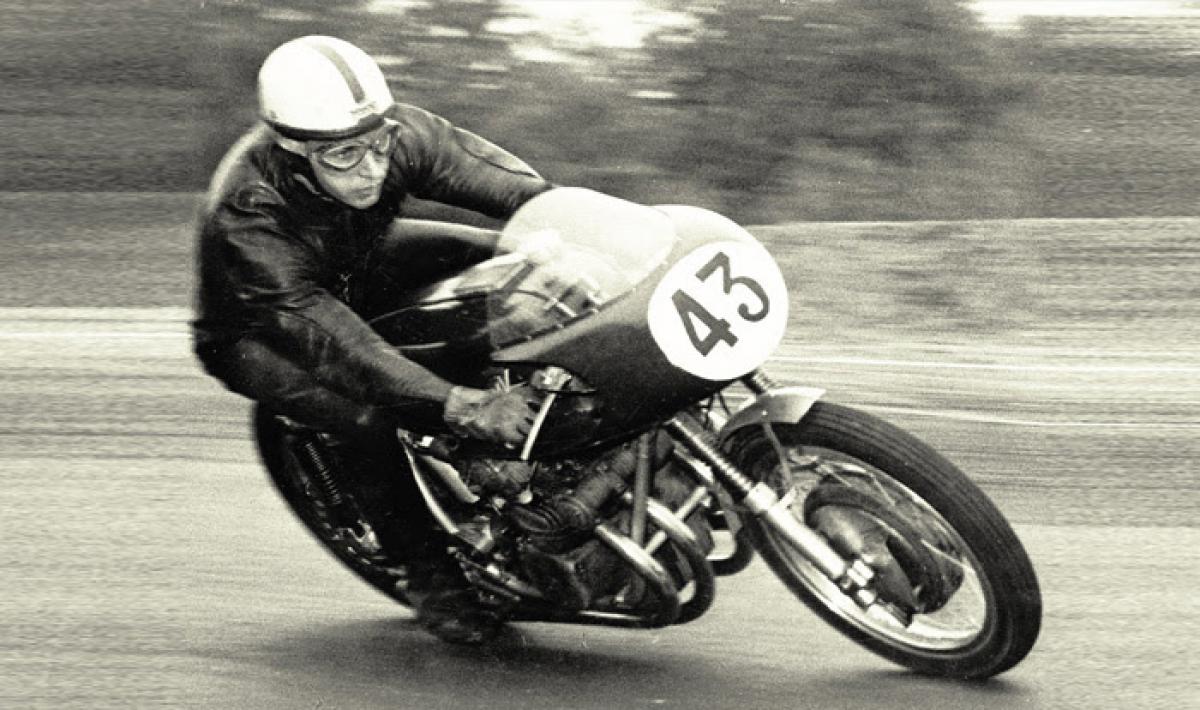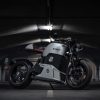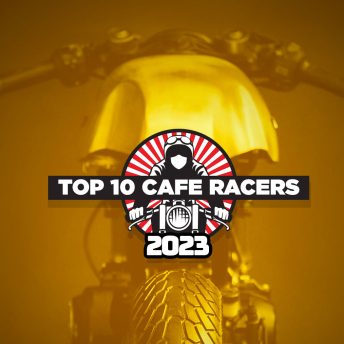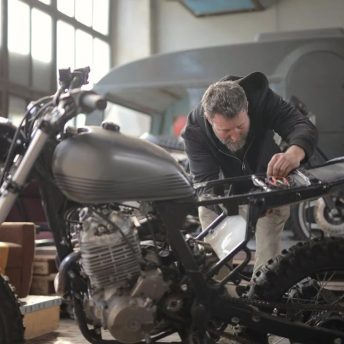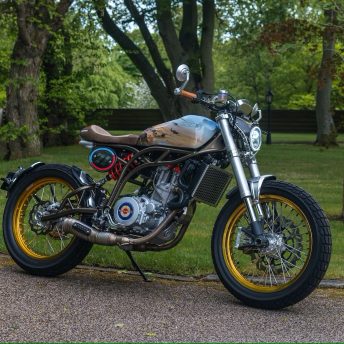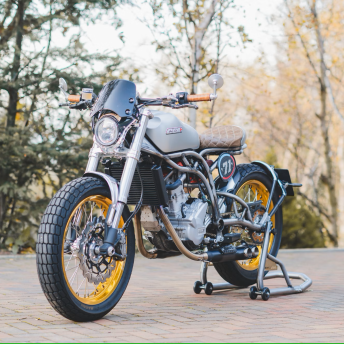As fans of motorcycles, and in particular cafe racers and neo-retro bikes, almost everyone has heard of the Isle of Man Tourist Trophy, often abbreviated to just “The TT.” It’s that famous and popular, and it’s one of the few races left on Earth that is 100% done on public roads, without building any particular track portions. It started and is still run in the fashion of an invitational, where “Tourists” could race with their motorcycles, and the winner gets the eponymous Trophy (hence, “Tourist Trophy”).
However, in the 1950s, after years of standard-style bikes with a few adventurous sport-style bikes from the likes of Norton and Triumph, a new shape and riding position appeared. A front cowling, a swept-back windscreen, the engine enclosed in what was understood at the time to be the most aerodynamic shape. They were revolutionary in appearance and riding style, allowing the rider to tuck down onto the tank behind the windshield and gain a massive amount of speed from the lessened wind resistance. The first true modern race bikes had made their way to the Isle of Man.
Here’s an example of a modern TT race bike, in case you’re wondering.
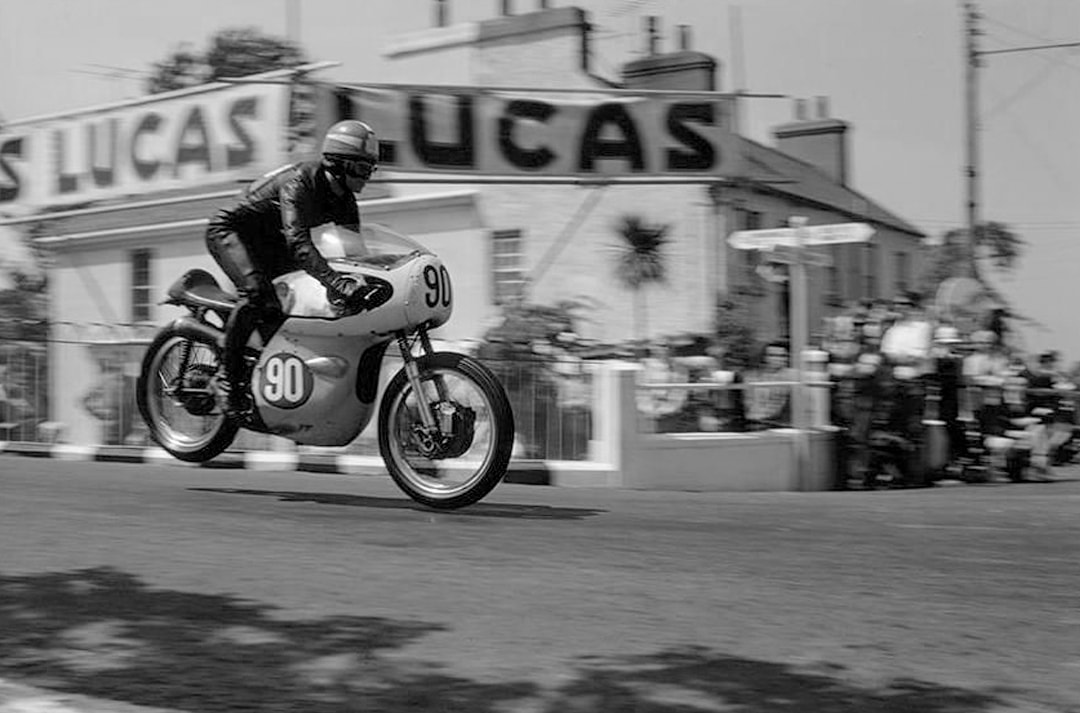
How the Isle of Man TT Influenced So Much of the Cafe Racer Movement
The moment pictures and TV coverage of those first proper TT race bikes appeared, everyone that was into motorcycles at the time in the UK wanted one. However, for most, these bikes were very expensive, tuned to be ridden more at top speed than as a mode of transport that could occasionally do a cafe run, and required access to a lot of fiberglass to make the fairings. So, as many British people are plucky and inventive, they took their production bikes and started to tinker.
This is not to say that the TT is the only and outright source of cafe racers, because it was so much more than just one event that started it all. The rebellious subculture, the recently raised national speed limit, the start of production of safety gear that meant you might survive coming off the bike, and the whole rock and roll movement of the early 1960s had a much larger influence than any one TT race.
Where the influence really took hold is in the riding position. Owners would take their standard British motorcycle, replace the handlebars with the original style of clip-ons, raise the seat, replace the mid-set pegs with rear-set ones that were raised as well, and sweep the exhaust pipes up towards the tail instead of firing straight out the back. Since fiberglass was still a ridiculously expensive material at the time, most racers simply placed a big headlight in front of their bars to be the windbreak they could tuck down behind.
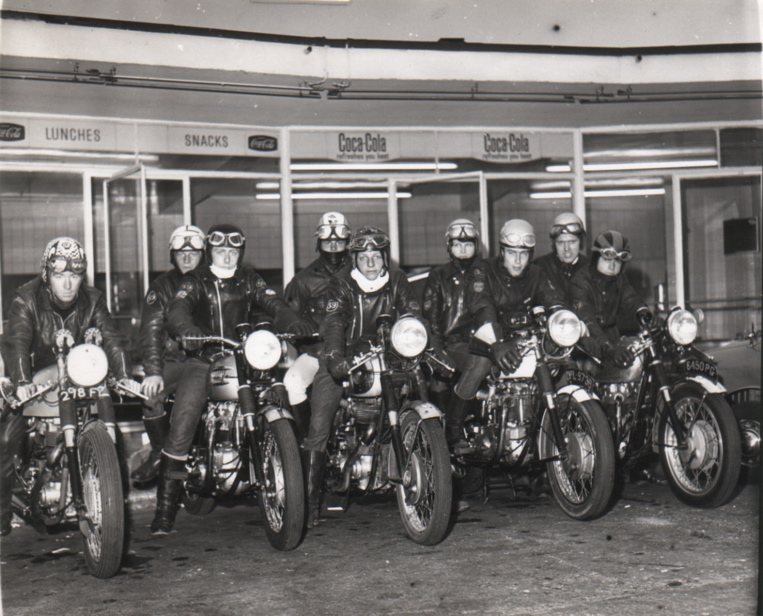
Looking at a 1960s race bike next to a 1960s cafe racer, the only real difference you would notice is that the cafe racer bike was much lighter and often used a performance V-twin or a tuned up parallel-twin, often with up-spec carburetors with trumpet-style intakes. When these bikes started to roar by on the motorways and gather at the truck-stop cafes that were there for the long-distance truck drivers, rumor has it that a trucker once said “You’re pretending to be a TT racer, but all you do is race between cafes,” and the rest is history.
There were a fortunate few that eventually made it to the Isle of Man during the 1960s, and found that the famous Snaefell Mountain Course, with its length of 37.73 miles, was an absolute joy to ride. It also helped that there were small towns along the route, and in those towns, you could often find a pub or a cafe. The cafe racers had just found their mecca.
Why the Snaefell Mountain Course Is Still a Cafe Racer’s Mecca Today
One of the things about the Isle of Man that grabbed the attention of most cafe racers was that, unlike mainland England, Scotland, and Ireland, many roads did not have speed limits. Even today, you will often only find speed limits when you approach towns or corners that are deemed dangerous, while the rest of the island is unrestricted.
Another benefit to the Isle of Man, being the home of the TT, is that motorcycles are not sneered upon there. On many British roads, as can be seen in many YouTube videos and compilations if you so desire to find them, motorcyclists really do get the short end of the stick, often with people yelling and screaming at them because they can filter to the front of snarled traffic (legally), can fit through narrow lanes without needing to fully pull over (again, legally), and are seen as hazards by many drivers on the B-roads (unfairly).
Yet, since 1907, when the TT started, motorcycles were accepted, even promoted, as the right way to enjoy the island’s beauty while also getting a whiff of that clean Irish Sea air. There’s even unofficial priority disembarkation from the mainland ferries for motorcycles, because there are often so many on the ferries that it just makes sense to get them off first.
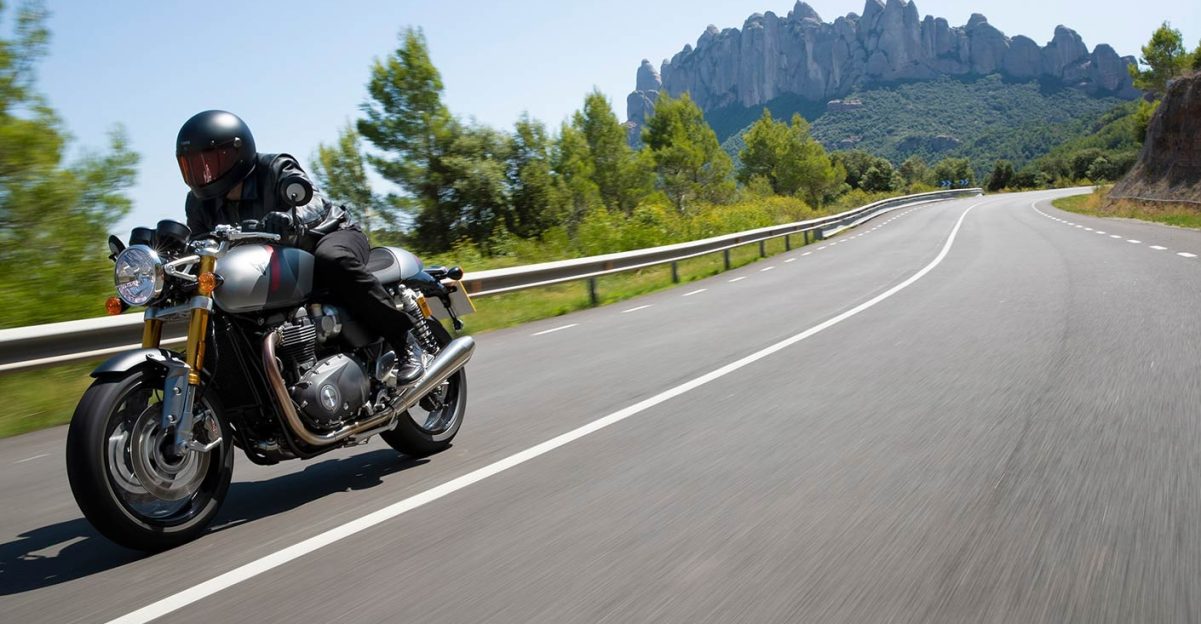
Since many manufacturers started riding the cafe racer wave in the 1970s, a lot of the older, more classic companies like Triumph, Royal Enfield, and Norton (in any one of its various incarnations) have produced from-the-factory cafe racer motorcycles. Prime examples today are the Triumph Thruxton RS, the Royal Enfield Continental GT 650, and the Norton V4CR. Other manufacturers, such as Kawasaki, have come fully on board with modern cafe racers as well, such as their neo-retro Vulcan S Cafe, a mix of cafe styling with cruiser mentality.
To bring it all together, you have:
- An island with either very high or unrestricted speed limits between towns
- A population that both understands and appreciates motorcycles
- Manufacturers making cafe racer style bikes even in 2022
That sounds pretty much like heaven. In fact, it is such a popular pilgrimage that you can get guided motorcycle tours of the island, with former TT racers, local experts, and sometimes celebrity guides with their own stories about corners such as Balla-scary (Ballagarey) and Ballaugh Bridge, the famous hump bridge that riders will leap across and land several meters down the road.
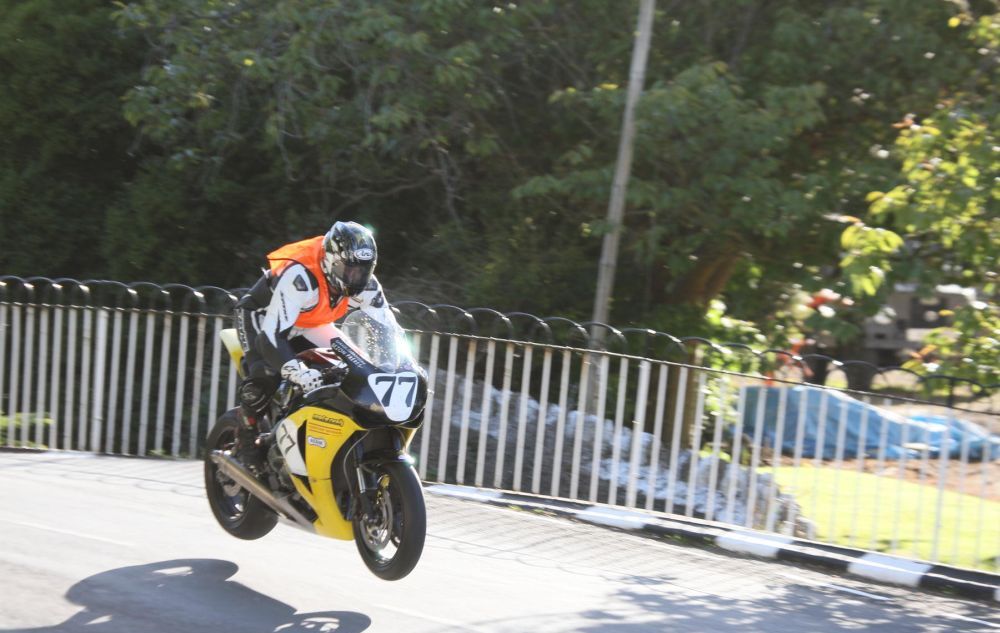
If you don’t go for the guided tours, you can still ride freely around the island. Many motorcyclists will take some of the straights at speed, often over 150 MPH, just to get the feel of what it must be like to race in, as Al Jazeera famously put it, “A Dangerous Addiction”.
A New Generation of Cafe Racers: Why the Cafe Sprints Are Coming Back to the Island
Take one island that has some of the best-kept roads in the world, make about 70% of them unrestricted, snake them around a big mountain in the middle of the island, and dot towns along the main roads. Then take a modern cafe racer bike such as the Triumph Thruxton RS with a properly enthusiastic rider, and set it loose on those roads.
During the history of the Isle of Man TT, many buildings along the route have become famous, such as the infamous Raven Pub by Ballaugh Bridge—and, of course, the haven for cafe racers, the Victory Cafe. What there are a lot of on the island, however, are various levels of cafes, from the Sound Cafe in Cregneash (rated #1 by many websites) to the Corner House Cafe on Bay Road (rated in the top 10 cafes of the island on multiple sites).
The only math needed here is simple addition: unrestricted roads + powerful cafe bikes + actual cafes to sprint between = a hell of a lot of fun. Of course, many of the more popular sprints are known, and if you don’t slow down to the imposed speed limits on town approaches, you can easily get dinged by the speed cameras and constabulary.
But the Isle of Man is a place where actual, full-on cafe sprints can still happen, and in many people’s view, it’s really one of two places left on Earth you can still do them—the other being the more 1960s style highway sprints on the unrestricted portions of the German Autobahn.
Unlike on the mainland, where cafe sprints would probably end up with your bike impounded and your license suspended or even revoked for excessive speed and dangerous driving, that ability to actually get a cafe racer up to speed and get tucked down behind the big headlight, knees tucked tight to the tank, provides the same kind of rebellious (but this time legal!) feeling that those who were there at the start of the cafe racer movement must have had.
The cafe style of bike was influenced heavily by the race bikes that took part in the TT, so it seems only fair that the younger generation, possibly the sons and daughters of those original cafe racers, gets a chance to experience a little of what it felt like. Numerous organizations now provide group trips to the Isle of Man for that very reason.
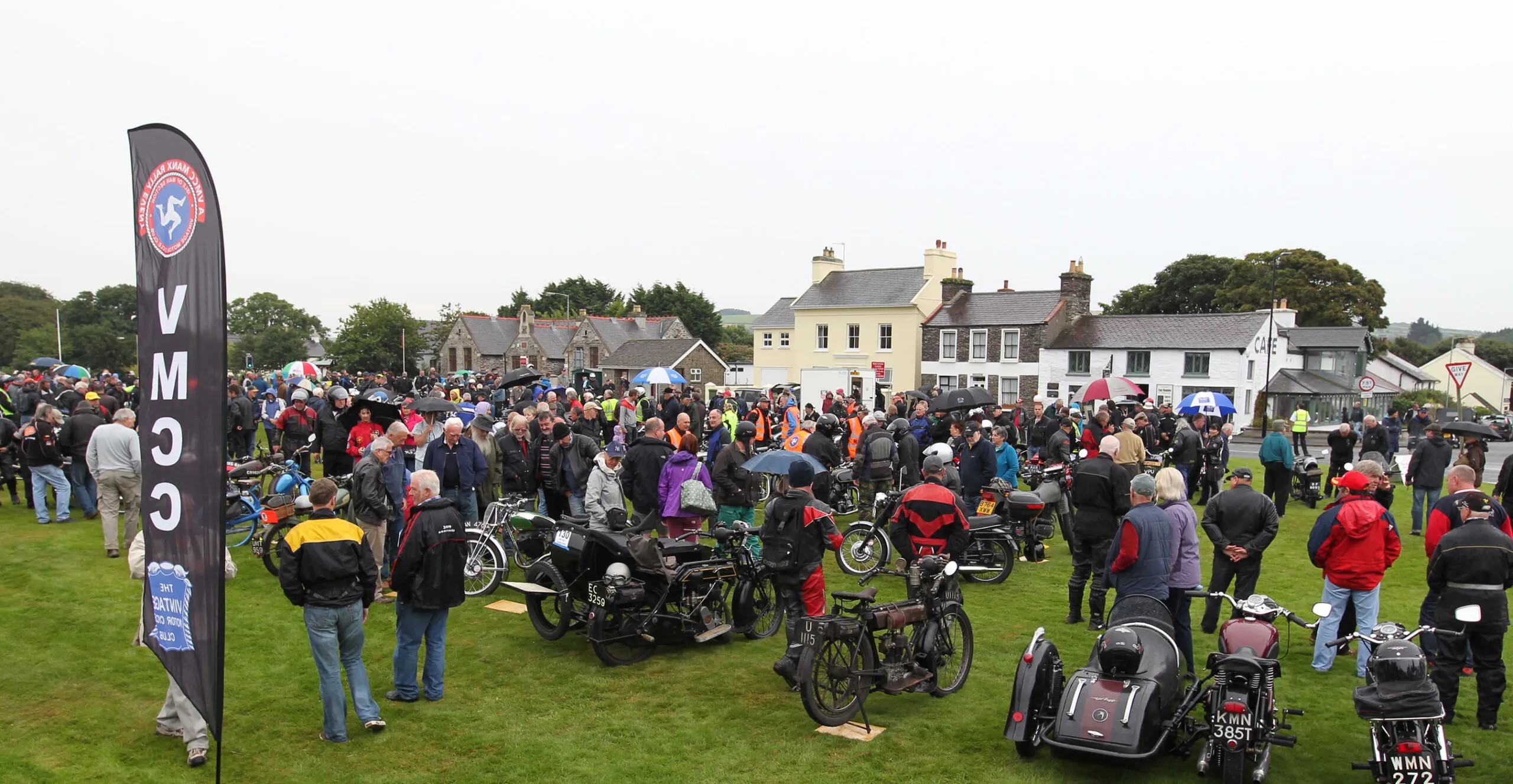


There are those as well that appreciate the motorcycle history of the Isle of Man, and there are several clubs and chapters of clubs on the island that are focused on vintage and classic motorcycles. These clubs will often host group rides around the island, as well as have some unofficial short sprints for the gutsier members that want to get a mile or so of what it felt like on the older, original cafe racers.
The most well known of these clubs is the Vintage Motorcycle Club of the Isle of Man, who not only have cafe meetups, concours and public show events, but will also travel to the mainland with their still-running classic bikes so that some of the culture of the island gets shown to the UK and the rest of the world.
The only thing that is left to say is that if you do go to the Isle of Man, ride responsibly. That means ride safely, stick to the speed limits when they are imposed, and otherwise enjoy the scenery. And maybe—just maybe—open up the right wrist on the unrestricted parts of the island as you tuck down behind that oversized headlight and, as legendary TT racer Joey Dunlop famously said, “keep it on the grey blur.”
